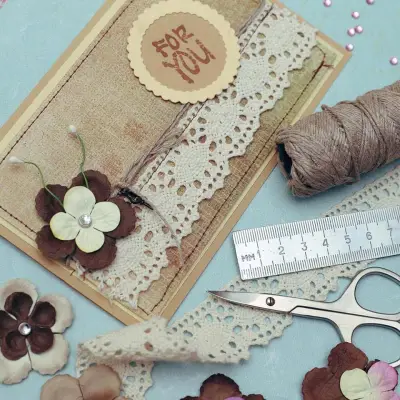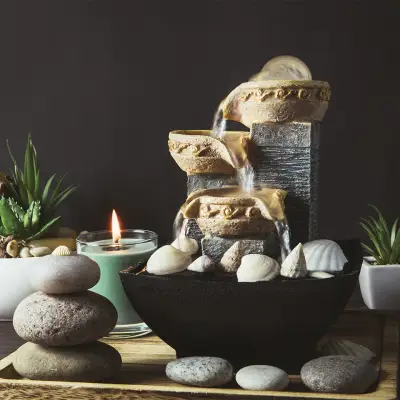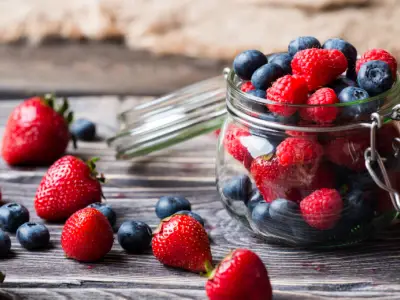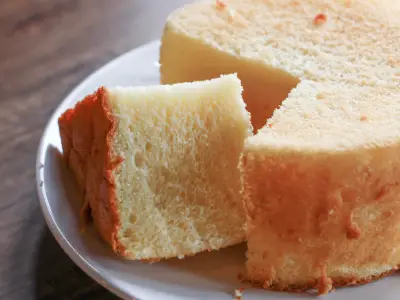There’s nothing quite like the anticipation of cutting into a homemade cake, only to find the centre still gooey, wet, or worse—raw. It can be incredibly frustrating to realise your cake is not cooked in the middle, and many home bakers, from beginners to the more experienced, face this baking hiccup.
The good news? It’s often fixable—and almost always avoidable once you understand what’s going wrong. In this guide, we’ll explore why cakes sometimes remain undercooked in the middle, what you can do to fix it, and how to ensure it doesn’t happen again.
Jump to:
- How to Tell If a Cake Is Cooked – And Why the Skewer Test Can Be Misleading
- Why Is the Middle of My Cake Not Cooking?
- What to Do If Your Cake Isn’t Cooked in the Middle
- What if The Cake Isn’t Salvageable?
- What About Soggy Bottom Cakes?
- What About Flat and Undercooked Cakes?
- What About Undercooked Chocolate Cake?
- How to Prevent Undercooked Cakes in the Future
- Study our Cake Baking and Decorating Diploma for £29
Recommended for you!
Best SellersHow to Tell If a Cake Is Cooked – And Why the Skewer Test Can Be Misleading
Most bakers use the skewer test to check if a cake is ready: insert a skewer or toothpick into the centre of the cake, and if it comes out clean, the cake is done. But here's the twist: sometimes the skewer comes out clean, but the cake is not cooked.
This can happen if the cake has set just enough on the surface to fool the skewer test, while the inside is still soft or wet.
Gently press the top of the cake—it should spring back. You can also check if the cake is pulling away from the sides of the tin. These signs, along with a clean skewer, provide a more reliable result.
Why Is the Middle of My Cake Not Cooking?
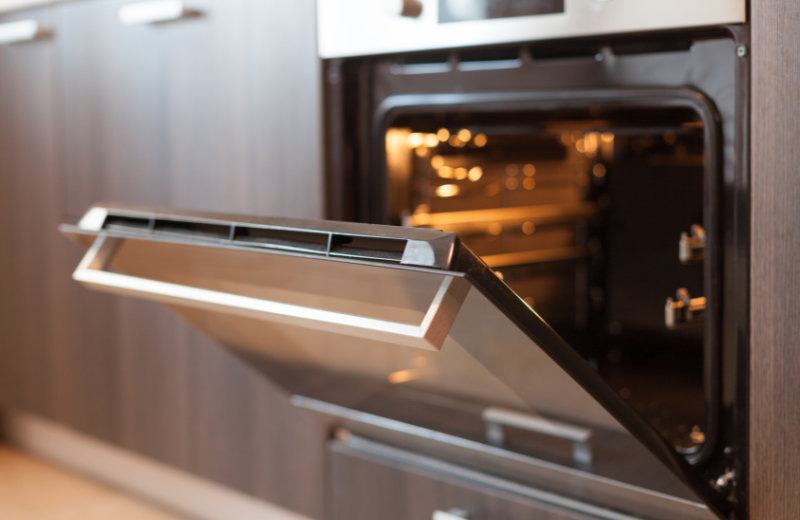
The most common reasons for your cake not cooking in the middle are:
- Incorrect oven temperature
- Overfilling the cake tin
- Too much moisture in the batter
- Opening the oven door too early
- Using the wrong cake tin
Each of these factors can prevent your cake from baking evenly, leaving you with the dreaded soggy bottom cake, or worse – a cake that’s burnt on the outside with a raw centre. Let’s get into these reasons in more detail:
1. Oven Temperature Troubles
One of the most common culprits is incorrect oven temperature. If your oven is too hot, the outside of the cake will cook (and possibly burn) before the inside has had a chance to rise and set. This can lead to your cake burning on the outside while still having a raw centre.
Even if you’ve set the right temperature, oven thermostats can be inaccurate. A simple oven thermometer can help you determine whether your oven runs hot or cold. Once you know, you can adjust accordingly.
Always preheat your oven fully before baking, and place your cake on the middle shelf for even heat distribution.
2. Overfilling the Tin
Too much batter in the tin can lead to a cake that takes far too long to cook in the middle. By the time the centre is done, the outer edges are dry or overbaked. This might leave you scratching your head, wondering why your cake is taking so long to cook in the middle.
Most recipes will indicate the appropriate tin size. If you're trying a new recipe or scaling one up, consider splitting the batter between two tins or using a deeper one and baking for longer at a lower temperature.
3. The Problem with Too Much Moisture
Sometimes, the batter itself is the problem. Using too much liquid or not enough flour can create an overly wet mix that struggles to set properly in the oven. This is particularly common with sponge cakes and rich chocolate cakes.
If you’ve found yourself slicing into an undercooked chocolate cake or an undercooked sponge cake that’s wet, heavy, or gummy in the middle, you may need to revisit your ingredient ratios.
4. Opening the Oven Door Too Early
We’ve all been tempted to check on a baking cake, especially when the smell fills the kitchen. But opening the door too soon can cause your cake to sink and stop cooking evenly. This results in a cake not baked in the middle and possibly flat as well.
Avoid opening the oven door until the cake has been baking for at least three-quarters of the recommended time.
5. Choosing the Wrong Tin
Using a cake tin that’s too small or too deep can prevent the centre from cooking properly. Glass and dark-coloured tins can also affect baking time, as they conduct heat differently.
Stick to the tin type and size recommended in the recipe. If you need to change the size, adjust the baking time and temperature accordingly.
What to Do If Your Cake Isn’t Cooked in the Middle
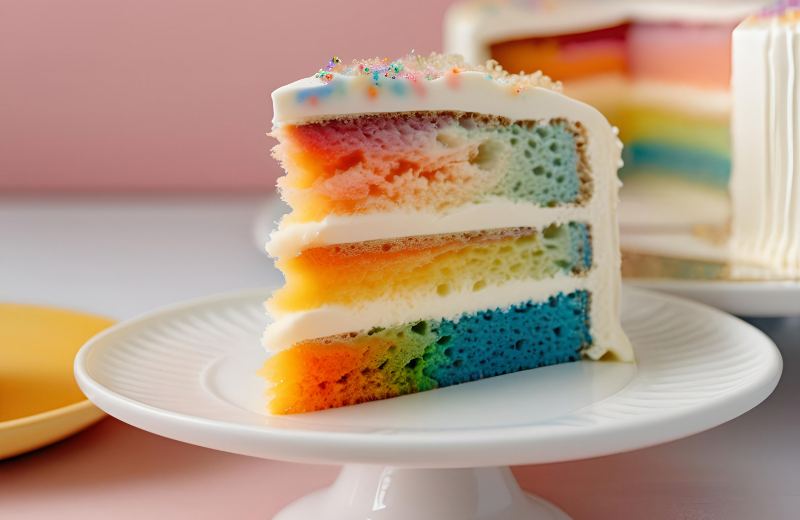
So your cake isn’t quite done. Don’t panic—there are ways to save it.
Can You Put a Cake Back in the Oven?
One of the most effective ways to fix a cake that’s not cooked in the middle is to return it to the oven. If you’ve just taken it out and noticed the centre is still soft or wet while the outer edges are firm, act quickly. Cover the top of the cake with foil—this protects the surface from overbrowning or burning—then place the cake back in the oven.
Lower the oven temperature slightly, by about 10–20°C, to allow the heat to penetrate the centre without drying out the outside. Bake for an additional 10–15 minutes, but keep a close eye on it. Check regularly by gently pressing the surface or using a skewer to test the middle.
This technique is especially helpful if the cake hasn’t had a chance to cool and is still warm from the initial bake. Just be careful not to jolt or shake the cake too much when transferring it, especially with delicate sponges, as this can cause it to sink.
Microwave Rescue for an Undercooked Cake
If the cake has already cooled or been removed from its tin, putting it back in the oven might not be ideal. But don’t give up yet—your microwave can come to the rescue.
This method works best for small undercooked patches, especially with undercooked sponge cake or undercooked chocolate cake. Cut away the raw or gooey sections and place them in a microwave-safe dish. Use short bursts—about 10 to 20 seconds at a time—checking the texture between each go.
The microwave dries and cooks food quickly, so don’t overdo it. Keep a close watch and stop as soon as the centre firms up. The texture might be slightly different from the oven-baked parts, but this method works well if you're planning to use the cake in trifles, layered desserts, or as a base for decorated cakes.
This is also a good solution if you’re tight on time or don’t want to rebake the entire cake.
Rebake the Cake in Slices
Another clever trick to save an uncooked cake is to slice it up and rebake it in portions. This method is perfect for cakes that are too dense or too large to finish baking evenly in one piece.
Start by letting the cake cool slightly so it's easier to handle without crumbling. Slice the cake into evenly sized pieces, roughly 3–5cm thick. Arrange the slices on a baking tray lined with parchment paper. Then, place them in a low oven—around 150°C.
Bake for 10–15 minutes, checking regularly until the slices are fully cooked through. Because the cake is now in smaller portions, heat can reach the centre much more efficiently. This helps dry out the undercooked middle without burning the outer edges.
While this method won’t result in a pristine whole cake, it’s an excellent way to avoid wasting your bake. Once cooked, the slices can be enjoyed on their own or used for cake pops, trifles, or even served with cream or custard as a rustic dessert.
What if The Cake Isn’t Salvageable?
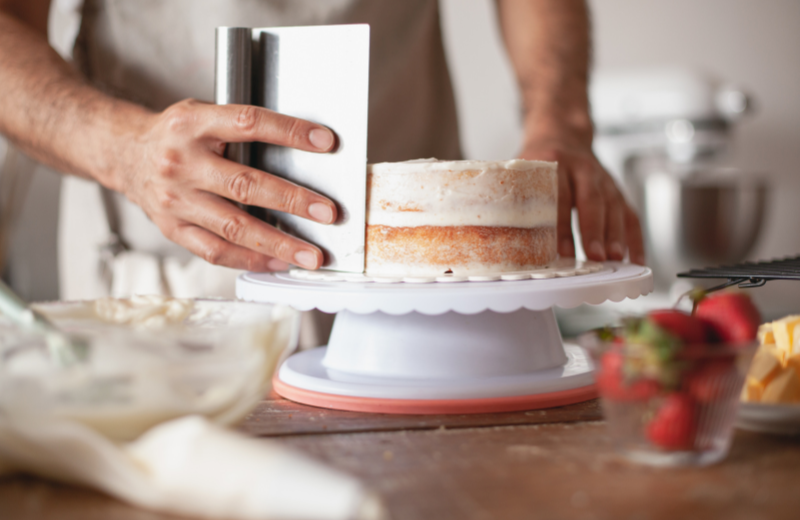
Sometimes, despite your best efforts, a cake simply can’t be rescued in its original form. Maybe it’s collapsed in the centre, the texture is too far off, or it’s unevenly baked beyond repair. Don’t worry—this doesn’t mean all your hard work has gone to waste. There are still plenty of creative and delicious ways to make the most of your bake.
Repurpose the Cake into Another Dessert
If saving the cake itself isn’t practical or the texture has been affected too much to serve as originally intended, consider turning it into a completely different dessert. An undercooked cake can still be incredibly tasty, and with a little creativity, it doesn’t need to go to waste.
Crumble the salvageable parts and use them in a trifle, layer them with cream and fruit in dessert jars, or mix them with frosting and roll into cake pops. Slightly soft or gooey cake can add richness to these types of desserts, especially when paired with contrasting textures.
Toast the Cake for a Crunchy Twist
If your cake is undercooked in places but the flavour is good, try transforming it into toasted cake slices. This is an especially good fix for loaf-style cakes or pound cakes.
Slice the cake and place the pieces on a baking tray. Toast them in the oven at a low temperature—around 140–150°C—until they develop a golden, crunchy crust. The result is something similar to biscotti or cake rusks, perfect with a cup of tea or coffee.
This method gives the cake a completely new texture that can be surprisingly moreish.
What About Soggy Bottom Cakes?
The dreaded soggy bottom usually means the base of the cake hasn’t baked long enough. This often happens in dense or moist cakes. To prevent it:
Use a metal tin instead of glass, which can slow cooking. Make sure your oven is properly preheated. Bake on a lower shelf so the heat reaches the base.
If your cake base is still wet but the rest is cooked, cover the top with foil and return it to the oven.
What About Flat and Undercooked Cakes?
Flat cakes are another common frustration. If your cake is flat and raw in the middle, possible causes include:
- Expired or insufficient baking powder or bicarbonate of soda.
- Overmixing the batter, which can knock out the air.
- Opening the oven door too early.
Flat cakes that are also undercooked suggest the batter didn’t rise enough to cook through properly. Check your raising agents and be careful not to overwork the mixture.
What About Undercooked Chocolate Cake?
Chocolate cakes can be particularly tricky when it comes to judging whether they’re properly baked. Their dark colour makes it harder to spot signs of burning or undercooking, especially around the edges or on the top. Unlike lighter sponges, a chocolate cake might appear done on the surface while still being gooey or even raw in the middle. This can lead to uncertainty—Is it supposed to be fudgy, or is it actually underbaked?
To avoid guesswork, rely on touch and texture rather than just appearance. A properly baked chocolate cake should feel firm and spring back when gently pressed. You can also check whether it’s starting to pull away from the sides of the tin. And remember, the skewer test can still be helpful—but a few moist crumbs are fine. Just make sure there’s no wet batter clinging to it.
Recommended for you!
Best SellersHow to Prevent Undercooked Cakes in the Future
Avoiding an undercooked cake is all about being prepared and paying attention to a few key details. These simple tips can help ensure your cake bakes evenly, rises properly, and cooks right through to the centre:
- Use an oven thermometer – Even if you’ve set the temperature correctly, your oven might run hotter or cooler than expected. An oven thermometer gives you an accurate reading so you can adjust as needed.
- Measure ingredients precisely – Baking is a science, and small inaccuracies can make a big difference. Too much liquid or too little flour can leave your cake wet and dense in the middle.
- Don’t overfill the cake tin – Too much batter in the tin makes it harder for the heat to reach the centre. Always follow the recipe’s suggested tin size or divide the mix between multiple tins.
- Use the correct tin size and type – Different tins conduct heat differently. Stick to what the recipe recommends to ensure even baking and a well-cooked centre.
- Place your cake on the middle oven shelf – This ensures heat is distributed evenly around the tin. It helps the cake rise properly and bake consistently throughout.
- Avoid opening the oven door too early – Let the cake set before checking it. Opening the door too soon can cause the centre to collapse or remain undercooked.
By following these simple practices, you’ll not only avoid a cake not cooked in the middle but also steer clear of other common baking mishaps like soggy bottoms, cracked tops, or sunken centres.
Study our Cake Baking and Decorating Diploma for £29
If you’re ready to take your baking skills to the next level, why not consider a structured course? At Centre of Excellence, our Cake Baking and Decorating Diploma Course is designed for bakers of all levels. Whether you’re a hobbyist or dream of turning your passion into a business, this course will guide you through every essential skill—from sponge cakes to sugarcraft.
For a limited time, you can enrol for just £29. Learn at your own pace, from anywhere, and gain a deeper understanding of what makes the perfect bake.






